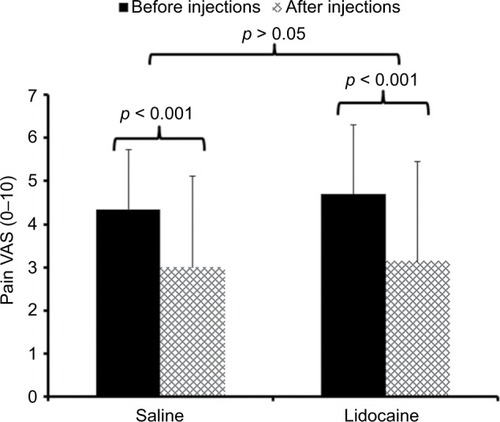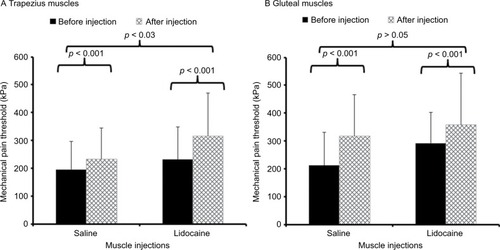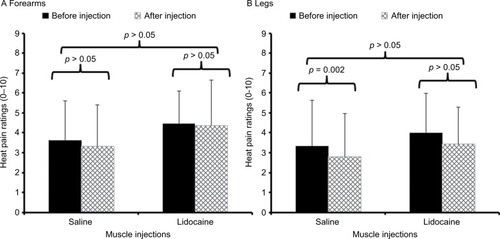Figures & data
Table 1 Demographics
Figure 1 Mean (SD) ratings of overall fatigue of participants with CFS before (black bars) and after (hatched bars) injections with 1% lidocaine or normal saline.
Abbreviations: CFS, chronic fatigue syndrome; SD, standard deviation; VAS, visual analog scale.

Figure 2 Mean (SD) pain ratings of participants with CFS before (black bars) and after (hatched bars) muscle injections with 1% lidocaine or normal saline.
Abbreviations: CFS, chronic fatigue syndrome; SD, standard deviation; VAS, visual analog scale.

Table 2 Ratings of fatigue, pain, depression, and anxiety
Figure 3 Average pressure pain thresholds (SD) of patients with CFS before (black bar) and 30 min after (hatched bar) muscle injections with 1% lidocaine or normal saline into both shoulder and gluteal areas.
Abbreviations: CFS, chronic fatigue syndrome; SD, standard deviation.

Table 3 Time × condition interaction effects of muscle injections on mechanical pain thresholds
Figure 4 Average heat pain ratings (SD) of 10 s heat stimuli in patients with CFS at 45°C before (black bars) and 30 min after (hatched bars) muscle injections with 1% lidocaine or normal saline into both shoulder and gluteal areas.
Abbreviations: CFS, chronic fatigue syndrome; SD, standard deviation.

Table 4 Time × condition interaction effects of muscle injections on heat pain ratings
